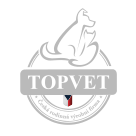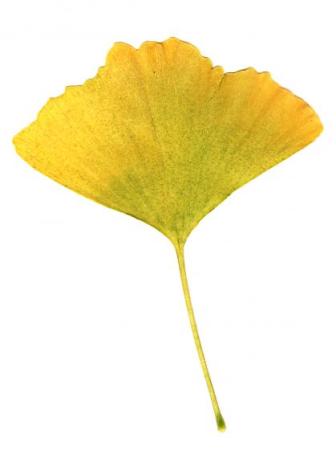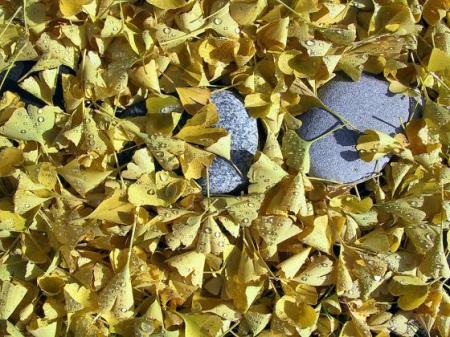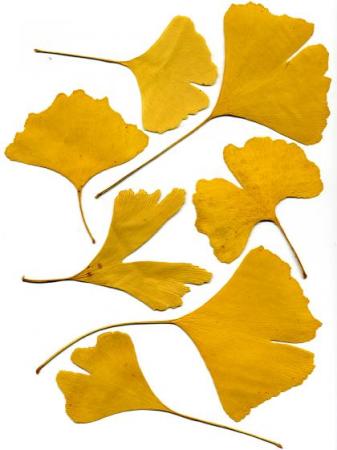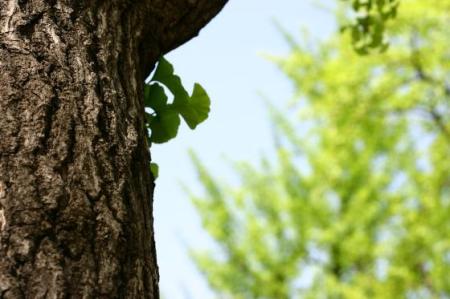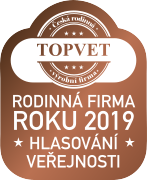Ginkgo biloba (Ginkgo biloba L.)
Ginkgo biloba (Ginkgo biloba L.)
Family: Ginkgoaceae (Ginkgoaceae)
Vernacular and other names
Ginko, Gin-nan, Yin guo, Pterophyllus salisburiensis, Salisburia macrophylla.
History
Throughout Asia, the ginkgo tree is considered a sacred tree. It is planted around Buddhist temples. In the first great Chinese atlas of medicinal plants, written 3000 years before Christ by the legendary emperor and sage Shen-nung, it is described as a remedy for the heart, lungs and memory problems. Chinese doctors used ginkgo for frostbite, swelling, asthma. Roasted seeds are eaten in Japan as a prevention against drunkenness. Ayurvedic medicine used ginkgo in the elixir of longevity, the mythical soma. It was brought to Europe around 1730 as an ornamental tree. It took quite a long time for European healers to discover the enormous potential of ginkgo in natural medicine.
Occurrence
It grows in drier permeable soils in the sun and in partial shade. It is propagated by seeds. Currently, ginseng is spread almost all over the world.
Description
Ginan is a very slow-growing, massive tree that appeared on Earth together with dinosaurs already 200 million years ago (ie in the Mesozoic Era). Individual trees can live up to 1000 years. It probably comes from China and Japan. Currently, the ginkgo biloba is the only living representative of the plant family Ginkgo biloba. It is a dioecious tree, the male flowers of which are green carnations and the female flowers are tiny in the hollows of the bracts. The female plants produce a kind of fruit about the size of a cherry, with a strong smelling pulp. Their seeds are edible. The leaves are bright green, fan-shaped, bilobed (heart-shaped) with forked veins. Leaf diameter is 6 – 9 cm, but up to 20 cm have been recorded. The upper side of the leaf may have a darker shade than the lower side. The leaves have a subtle, characteristic scent. In autumn, the leaves of the ginseng have a beautiful golden color. The tree grows to a height of up to 35 meters and a diameter of 3-4 meters (exceptionally up to 7 m).
Used parts
The used part of ginkgo is the leaves. The fruits and seeds are also used in Chinese natural medicine. The effective form is the concentrated extract 35 – 67 : 1. The fruit is not suitable for consumption raw, but after heat treatment it can be consumed in any quantity. Raw fruits contain 4-methoxypyridoxine, which is a substance that destroys vitamin B6 in the body (it is reliably destroyed by heat treatment). The leaves are harvested in late summer or early fall (just before they start to change color).
Active substances
It contains terpenes, collectively called ginkgolides. Other substances include polyphenols (mainly flavonoids – mono, di, tri - glycosides). Flavon glycosides and terpenic lactones exhibit antioxidant activity. The flavonoid content must not be less than 0.5%. The content of flavone glycosides is 0.2 - 0.4%. The total content of gynkgolides is 0.06 - 0.23% and bilobalides is 0.26%. Reliable final products do not contain biflavones.
The standardized extract 35 – 67 : 1 contains 22 – 27% flavone glycosides, 5 – 7% lactone terpenes - of which 2.8 – 3.4% are ginkgolides A, B, C and 2.6 – 3.2% bilobalides. The level of ginkgolytic acids must be below 5 mg/kg.
Classification
Antioxidant, Vasodilator, Antiallergic, Vascular tonic.
Proven effects
• Beneficial effects on brain tissue have been clinically proven, especially in the case of cerebral vascular insufficiency and related conditions (primary degenerative dementia syndrome, vascular dementia). The effectiveness of ginkgo on brain tissue in elderly people has been clinically tested (ability to concentrate, improves memory, reduces apathy and moodiness). Ginseng has been proven to suppress the manifestations of "senility" by activating an enzyme in red blood cells that improves the transmission of impulses between nerve cells. Ginko flavonoids increase venous tone and reduce capillary permeability. The high efficiency against free radicals is also significant. Ginkgolides are very effective in the first phase of atherosclerosis (so-called hardening of the arteries). It is used for peripheral circulation problems such as dizziness (vertigo), auditory hallucinations and acrocyanosis (blue fingertips). It is proven to be 100% effective in suppressing tinnitus (chronic ringing in the ears). In the journal of the American Medical Association, the result of research was printed, which confirmed the fact that ginseng slows down the decline of intelligence in people suffering from Alzheimer's disease and multi-infarct dementia. They act against the narrowing of the arteries supplying blood to the penis and are therefore an effective prevention against impotence. Ginseng is also recommended as an antidepressant. Ginseng extract relieves pain when walking in people suffering from arterial occlusive disease (insufficient blood supply to the peripheral parts of the body) and inflammation of the veins (phlebitis). The active substances of ginkgo suppress allergic reactions, which can be used in the treatment of asthma.
Usage
• Antioxidant activity (empties the body of free radicals)
• Alzheimer's disease and multi-infarct dementia
• Memory loss (even as a result of a stroke)
• Prevention of heart attack
• Improves tone and elasticity of blood vessels
• Reduces signs of aging
• Impotence
• Whistling, buzzing in the ears
• Dizziness
• For cold feet and hands (Raynaud's disease)
Conditions for achieving maximum effect
• I recommend using preparations that are made from standardized extracts. Only in this way can the declared effect be full and constant from the point of view of individual doses.
• Clinical studies conducted in elderly people recommend 120 to 160 mg of extract daily for 12 weeks to slow down the signs of aging and improve mental performance.
• Most clinical studies agree on a daily dose of 120 to 240 mg of ginkgo leaf extract. It is advisable to divide this amount into three doses of 40 – 80 mg.
• 40 mg of extract is equivalent to 1.4 – 2.7 g of dried leaves.
• In the case of alcohol tincture, we recommend 0.5 ml 3 times a day (0.5 ml corresponds to approximately 8 drops of extract).
Side effects:
When taken orally, side effects are relatively rare (headache, indigestion). Some people have experienced irritability, hyperactivity, diarrhea and vomiting. The pulpy seeds of ginko contain very strong contact allergens that can seriously damage the skin. Ginseng is not recommended for children. Ginseng is not recommended for people taking blood thinners. Of course, do not use preparations containing ginseng if you are known to be hypersensitive to it. Currently, there is not enough information about whether it is safe to use ginkgo during pregnancy, during breastfeeding and for young children. For that reason, I do not recommend using ginkgo in these cases.
Interesting points:
• Currently, Japanese scientists have discovered an enzyme in ginseng seeds that accelerates the breakdown of alcohol in the body. This reduces the risk of alcohol intoxication.
• Currently, the possibilities of using ginkgo to dampen the body's negative reactions during organ implantation are being verified.
• Cooked fruits are said to stabilize sperm production.
• Mao Tse Tung - the great leader himself - also used Jinan as a means of prolonging life and improving mental performance.
Recipes
Herbs with similar effects
Cedar.
Note
In the Topvet menu you will find a wide range of products with a high content of juniper essential oil.
In addition to personal experiences, information from articles and publications was used in the article:
- WHO monographs on selected medicinal plants
- European Medicines Agency Evaluation of Medicines for Human.
- Le Santé par les plantes, Sélection du Readerś Digest, 2003.
- Guide pratique des remédes naturels, Sélection du Readerś Digest, Paris 1995.
- Bylinář, Zdraví, krása a radost, Lesley Bremnessová, 1988.
- The Healing Herbs, Michael Castleman, 1991.
- DeFeudis FV. Ginkgo biloba extract (egb 761): pharmacological activities and clinical applications. Paris, Elsevier, Editions Scientifiques, 1991:1187.
- Hänsel R et al., eds. Hagers Handbuch der pharmazeutischen Praxis, Vol. 6, 5th ed. Berlin, Springer-Verlag, 1994.
- Squires R. Ginkgo biloba. Australian traditional medicine society (ATOMS), 1995:9–14.
- Huh H, Staba EJ. The botany and chemistry of Ginkgo biloba L. Journal of herbs, spices and medicinal plants, 1992, 1:91–124.
- Keys JD. Chinese herbs, their botany, chemistry and pharmacodynamics. Rutland, VT, CE Tuttle, 1976:30–31.
- Melzheimer V. Ginkgo biloba L. aus Sicht der systematischen und angewandten Botanik. Pharmazie in unserer Zeit, 1992, 21:206–214.
- Van Beek TA, Lelyveld GP. Thin layer chromatography of bilobalide and ginkgolides A, B, C, J on sodium acetate impregnated silica gel. Phytochemical analysis, 1993, 4:109–114.
- Hasler A, Meier B, Sticher O. Identification and determination of the flavonoids from Ginkgo biloba by HPLC. Journal of chromatography, 1992, 605:41–48.
- European pharmacopoeia, 3rd ed. Strasbourg, Council of Europe, 1997.
- Sticher O. Biochemical, pharmaceutical and medical perspectives of Ginkgo preparations. In: New Drug Development from Herbal Medicines in Neuropsychopharmacology. Symposium of the XIXth CINP Congress, Washington, DC, June 27–July 1, 1994.
- Sticher O. Quality of Ginkgo preparations. Planta medica, 1993, 59:2–11.
- Van Beek TA et al. Determination of ginkgolides and bilobalide in Ginkgo biloba leaves and phytochemicals. Journal of chromatography, 1991, 543:375–387.
- Kleijnen J, Knipschild P. Ginkgo biloba. Lancet, 1992, 340:1136–1139.
- Kleijnen J, Knipschild P. Ginkgo biloba for cerebral insufficiency. British journal of clinical pharmacology, 1992, 34:352–358.
- Bauer U. Six month double-blind randomized clinical trial of Ginkgo biloba extract versus placebo in two parallel groups in patients suffering from peripheral arterial insufficiency. Arzneimittel-Forschung, 1984, 34:716–720.
- Saudreau F, Serise JM, Pillet J. Efficacité de l’extrait de Ginkgo biloba dans le traitement des artériopathies obliterantes chroniques des membres inferieurs au stade III de la classification de Fontaine. Journal malade vasculare, 1989, 14:177–182.
- Blume J et al. Placebokontrollierte Doppelblindstudie zur Wirksamkeit von Ginkgo biloba - Spezialextrakt EGb 761 bei austrainierten Patienten mit Claudicatio intermittens. VASA, 1996, 2:1–11.
- Haguenauer JP et al. Traitement des troubles de l’equilibre par l’extrait de Ginkgo biloba. Presse medicale, 1986, 15:1569–1572.
- Kade F, Miller W. Dose-dependent effects of Ginkgo biloba extraction on cerebral, mental and physical efficiency: a placebo controlled double blind study. British journal of clinical research, 1993, 4:97–103.
- Peter H, Fisel J, Weisser W. Zur Pharmakologie der Wirkstoffe aus Ginkgo biloba. Arzneimittel-Forschung, 1966, 16:719–725.
- Pincemail J et al. In: Farkas L, Gabor M, Kallay F, eds. Flavonoids and bioflavonoids. Szeged, Hungary, 1985:423.
- Pincemail J et al. Ginkgo biloba extract inhibits oxygen species production generated Folium Ginkgo 165 by phorbol myristate acetate stimulated human leukocytes. Experientia, 1987, 43:181–184.
- Oberpichler H et al. Effects of Ginkgo biloba constituents related to protection against brain damage caused by hypoxia. Pharmacological research communications, 1988, 20:349–352.
- Krieglstein J. Neuroprotective effects of Ginkgo biloba constituents. European journal of
pharmaceutical sciences, 1995, 3:39–48.
- Larssen RG, Dupeyron JP, Boulu RG. Modèles d’ischémie cérébrale expérimentale par microsphères chez le rat. Étude de l’effet de deux extraits de Ginkgo biloba et du naftidrofuryl. Thérapie, 1978, 33:651–660.
- Cahn J. Effects of Ginkgo biloba extract (GBE) on the acute phase of cerebral ischaemia due to embolisms. In: Agnoli A et al., eds. Effects of Ginkgo biloba extract on organic cerebral impairment. London, John Libbey, 1985:43–49.
- Chatterjee SS. Effects of Ginkgo biloba extract on cerebral metabolic processes. In: Agnoli A et al., eds. Effects of Ginkgo biloba extract on organic cerebral impairment. London, John Libby, 1985:5–14.
- Krieglstein J, Beck T, Seibert A. Influence of an extract of Ginkgo biloba on cerebral blood flow and metabolism. Life sciences, 1986, 39:2327–2334.
- Beck T et al. Comparative study on the effects of two extract fractions of Ginkgo biloba on local cerebral blood flow and on brain energy metabolism in the rat under WHO monographs on selected medicinal plants 166 hypoxia. In: Krieglstein J, ed. Pharmacology of cerebral ischemia. Amsterdam, Elsevier, 1986:345–350.
- 56. Oberpichler H et al. Effects of Ginkgo biloba constituents related to protection against brain damage caused by hypoxia. Pharmacology research communications, 1988, 20:349–352.
- Chatterjee SS, Gabard B. Effect of an extract of Ginkgo biloba on experimental neurotoxicity. Archives of pharmacology, 1984, 325(Suppl.), Abstr. 327.
- Otani M et al. Effect of an extract of Ginkgo biloba on triethyltin-induced cerebral oedema. Acta neuropathology, 1986, 69:54–65.
- DeFeudis FV et al. Some in vitro and in vivo actions of an extract of Ginkgo biloba (GBE 761). In: Agnoli A et al., eds. Effects of Ginkgo biloba extract on organic cerebral impairment. London, John Libbey, 1985:17–29.
- Denise P, Bustany P. The effect of Ginkgo biloba (EGb 761) on central compensation of a total unilateral peripheral vestibular deficit in the rat. In: Lacour M et al., eds. Vestibular compensation: facts, theories and clinical perspectives. Paris, Elsevier, 1989:201–208.
- Desquand S et al. Interference of BN 52021 (ginkgolide B) with the bronchopulmonary effects of PAF-acether in the guinea-pig. European journal of pharmacology, 1986, 127:83–95.
- Ginkgo biloba extrakt. Eine plazebokontrollierte, randomisierte Doppelblind-Studie. Perfusion, 1989, 1:28–30.
- and more
Author: Dr. Jiří Pantůček and the Topvet collective
© Copyright (2009) MVDr. Jiří Pantůček - all rights reserved. No part of this document may be reproduced or transmitted in any form or by any means, electronic, including copying, recording, or by any information retrieval system, including websites, without written permission.
All information contained in the herbarium has not been evaluated by the control authorities for the control of dietary supplements. All information contained in this plant herbarium is for educational, informative and entertainment purposes. This information should not be used for diagnosis, indication or change of treatment prescribed by a doctor. The plants listed in the herbarium are not substitutes for medicines. In the case of any treatment, it is necessary to consult the use of dietary supplements with your attending physician.


